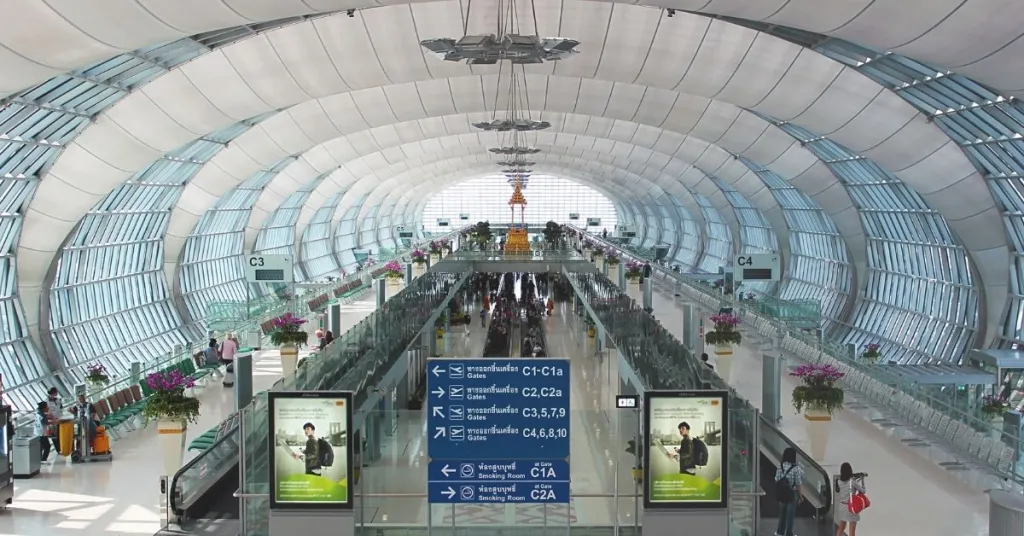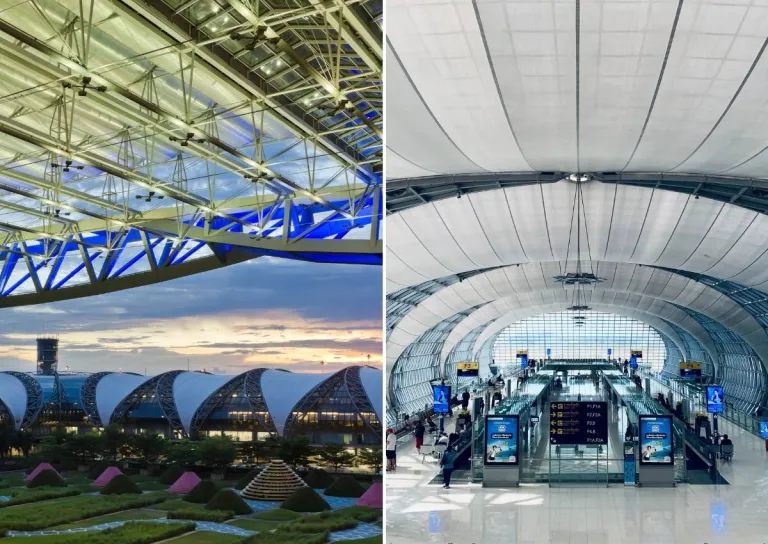Our favourite places to stay on this sleepy Cebu island.
Thailand Implements Facial Recognition at Six Airports

Thailand is stepping up its travel tech game by implementing facial recognition in six of its busiest airports. Starting 1 Nov 2024, domestic passengers will be the first to experience this streamlined, biometric check-in process, with international travellers following suit on 1 Dec 2024. This new automated system, introduced by Airports of Thailand (AOT), allows passengers to show their physical ID only once, completely eliminating the need to repeatedly present boarding passes.
Also read: The Impact of Thailand's Rising Costs to Budget Travellers
What travellers need to know about Thailand's facial recognition airport system
 Image credit: (L-R) tomgigabite, Belle Shang via Canva Pro
Image credit: (L-R) tomgigabite, Belle Shang via Canva Pro
The six airports rolling out the facial recognition system include Suvarnabhumi International Airport, Don Mueang International Airport, Chiang Mai International Airport, Mae Fah Luang/Chiang Rai International Airport, Phuket International Airport, and Hat Yai International Airport. To use this system, passengers will be prompted to consent to identity verification at either the staffed check-in counters or self-service kiosks. Once completed, travellers’ biometric and travel details are digitally stored, allowing seamless transitions from baggage drop-off to boarding gate—no passport or boarding pass required. However, each check-in registration only applies to the single journey at hand, ensuring security and privacy standards.
Kirati Kitmanawat, director of Airports of Thailand, expressed that this initiative will save passengers valuable time during the verification process, providing them more freedom to relax, shop, or dine before their flights. He explained that modernising airport infrastructure is a major priority for AOT, emphasising the organisation’s commitment to becoming a world-class airport operator.
This high-tech upgrade comes in response to the growing numbers of passengers travelling through these airports. Over the past year, AOT reported handling approximately 11.29 million passengers across the six hubs, a nearly 20% increase from the previous year. Among these were 72.67 million international passengers, with travellers predominantly arriving from countries like China, India, South Korea, Russia, and Japan. During the same period, the six airports collectively handled 732,690 flights—a 14.5% year-on-year increase.
Also read: Thailand Ends Visa-Free Travel for Asia and Australia Starting December 2024
The introduction of facial recognition technology is expected to accommodate the anticipated rise in passenger numbers, providing a more efficient, hassle-free travel experience. As AOT moves toward its goal of becoming a premier airport operator, this biometric innovation marks a significant step toward elevating Thailand’s airport standards, making travel both faster and more enjoyable. So, if you’re planning a trip to Thailand in the coming months, get ready for a futuristic experience as you breeze through security with just a smile!
Featured image credit: Dmitri Pronchenko via Canva Pro
Published at
About Author
Anne Mercado
Subscribe our Newsletter
Get our weekly tips and travel news!
Recommended Articles
10 Bantayan Island Resorts, Hotels, and Rentals for Your Tropical Escape 10 Best Mountain Cafes in the Philippines for Your Peak Coffee Experience Coffee date on the mountains, anyone?
10 Best Things to Do in Los Angeles Los Angeles is more than Hollywood stars. From hikes with killer views to beaches straight out of a rom-com, here are 10 must-do LA experiences for Filipino travellers or any wanderers in general!
10-day Christmas and New Year Japan Trip: Complete Travel Itinerary Celebrate Christmas and New Year in Japan with this 10-day holiday vacation itinerary packed with Tokyo lights, Kyoto charm, and Osaka adventures.
10 Family Outing Ideas in Metro Manila Under ₱500 Looking for a weekend bonding with the family under ₱500? Head to these places, pronto!
Latest Articles
Fly With Your Pet Guide: How to Use Philippine Airlines’ New FurPAL Service You can now travel with your pets on Philippine Airlines’ pet-friendly flights!
Japan to Block Visa Renewal for Foreigners With Unpaid Pensions and Health Insurance Japanese immigration insurance will use payment records as part of the stricter visa renewal process.
Dragon Treasure Castle Guide: A New Spot to Add to Your Baguio Itinerary This castle in Baguio looks straight out of Game of Thrones!
You May Get Flagged for a US Visa in 2025 If You Are a Filipino Transgender Traveller US Visa Guide for Trans
Bluey’s Coming to Manila in 2026! Here’s How to See the Stage Show and What You Need to Know See ticket details for Bluey's stage show in Manila!

